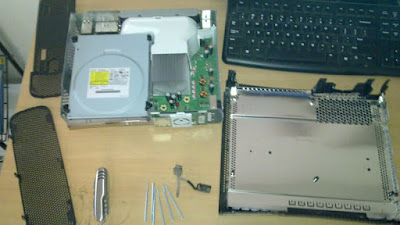For those who don't know me, I have been a tinkerer since my childhood, the first memories i have of this trait of mine is of opening my Leo toy gun and an unfortunate alarm clock, the toy gun i had to throw away and alarm clock was placed behind a cupboard, had to destroy the evidence, but was caught both times by my parents.
Since then I have opened mp3 players, FM radio's, CD players, floppy drives, DVD drives, my CPU, Television ... the list goes on......
I own a XBOX360 , courtesy of my better half and that was the thing which was left unopened , mocking me , sitting smugly , as a challenge , an unconquered frontier. Not anymore :)
Although the mission was not a total success as I wanted to flash my xbox to be able to play backed up games ( you know what i mean ), but my xbox has liteon DVD drive , model number DG-16D2S-(09C), firmware number 93450C, which unfortunately has to be flashed by soldering a wire onto it, and I am not great with soldering, so I wisely decided to back off.
Have repacked the xbox and tested it, its running fine. Here is the pics of the adventure i had.

Regards,
Ishan